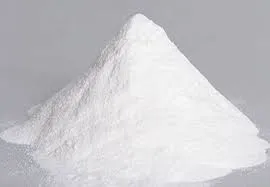
Dec . 03, 2024 16:42 Back to list
hpmc for gypsum
The Importance of HPMC in Gypsum Applications
Hydroxypropyl Methylcellulose (HPMC) is a versatile and essential additive widely used in the construction and building materials industry. Particularly in gypsum applications, HPMC plays a crucial role in enhancing the performance and quality of gypsum-based products. This article explores the importance of HPMC in gypsum, its benefits, and its applications.
Gypsum, a naturally occurring mineral primarily composed of calcium sulfate dihydrate, is extensively used in the production of construction materials like plaster, wallboards, and cement. Its unique properties make gypsum an ideal material for various applications, including fire-resistant and soundproofing solutions. However, to improve the handling and performance characteristics of gypsum products, HPMC is often added during the formulation process.
The Importance of HPMC in Gypsum Applications
Furthermore, HPMC contributes to the water retention properties of gypsum-based products. Water retention is critical in preventing premature drying of the mixture, which can lead to cracking and reduced adhesion. By enhancing the water retention capacity, HPMC ensures that the gypsum remains workable for an extended period, facilitating better adhesion to surfaces and improving the overall durability of the final product.
hpmc for gypsum

Another significant benefit of using HPMC in gypsum applications is its positive influence on the mechanical properties of the finished material. Gypsum products treated with HPMC generally exhibit improved flexibility and strength. This enhanced performance is particularly valuable in applications where resistance to cracking and structural integrity are paramount. As a result, gypsum-based products with HPMC tend to offer better performance in various construction situations, extending their life cycle and reducing the need for repairs.
Moreover, HPMC is a non-toxic, environmentally friendly additive, which aligns with the growing demand for sustainable construction materials. With an increasing focus on green building practices, using HPMC in gypsum products not only enhances performance but also supports eco-friendly approaches to construction. This aspect is particularly appealing to both manufacturers and consumers looking for sustainable building solutions.
In addition to its benefits in formulation, HPMC also plays a vital role in the versatility of gypsum products. By varying the viscosity and type of HPMC used, manufacturers can tailor gypsum formulations to meet specific requirements for different applications. This adaptability facilitates the production of specialized products, such as self-leveling compounds, tiling adhesives, and more, expanding the range of applications for gypsum in construction.
In conclusion, HPMC is an invaluable additive in gypsum applications, enhancing workability, water retention, mechanical properties, and sustainability. As the construction industry continues to evolve, the role of HPMC in improving the performance and diversity of gypsum products will undoubtedly remain significant. With ongoing advancements in formulation technologies, the synergy between HPMC and gypsum will continue to shape the future of the building materials industry, leading to higher quality, more durable, and environmentally friendly construction solutions.
-
Versatile Hpmc Uses in Different Industries
NewsJun.19,2025
-
Redispersible Powder's Role in Enhancing Durability of Construction Products
NewsJun.19,2025
-
Hydroxyethyl Cellulose Applications Driving Green Industrial Processes
NewsJun.19,2025
-
Exploring Different Redispersible Polymer Powder
NewsJun.19,2025
-
Choosing the Right Mortar Bonding Agent
NewsJun.19,2025
-
Applications and Significance of China Hpmc in Modern Industries
NewsJun.19,2025







